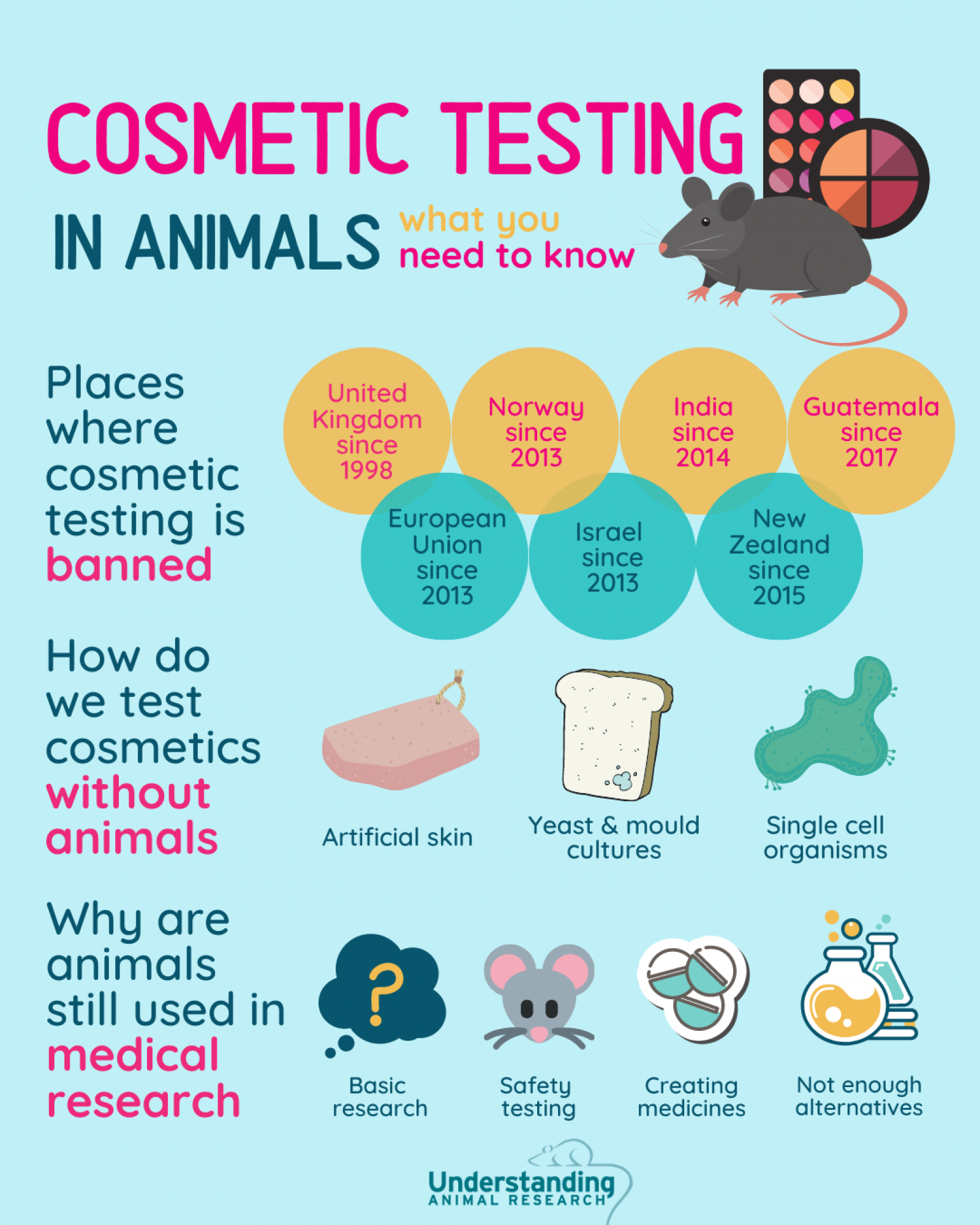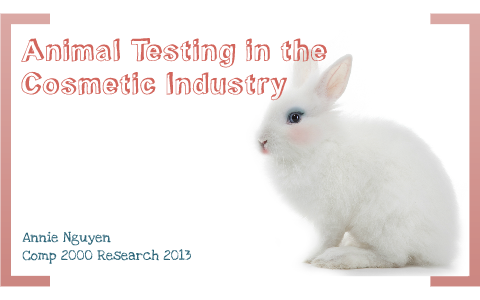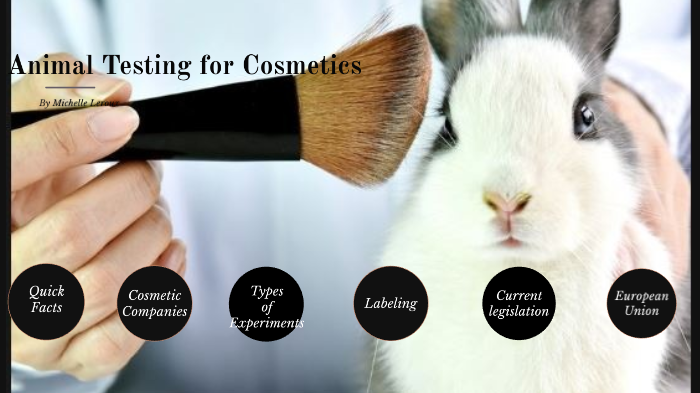The Complexities Of Animal Testing In The Cosmetics Industry: A Comprehensive Overview
The Complexities of Animal Testing in the Cosmetics Industry: A Comprehensive Overview
Related Articles: The Complexities of Animal Testing in the Cosmetics Industry: A Comprehensive Overview
Introduction
In this auspicious occasion, we are delighted to delve into the intriguing topic related to The Complexities of Animal Testing in the Cosmetics Industry: A Comprehensive Overview. Let’s weave interesting information and offer fresh perspectives to the readers.
Table of Content
The Complexities of Animal Testing in the Cosmetics Industry: A Comprehensive Overview
/GettyImages-1316412895-c10088ce59774d329891a246daa68dda.jpg)
The cosmetics industry is a vast and multifaceted realm, driven by innovation, consumer demand, and the pursuit of beauty. However, its history is intertwined with a practice that has sparked ethical and scientific debate for decades: animal testing. While many countries have banned or restricted this practice, the debate continues, fueled by concerns about animal welfare, scientific validity, and the availability of alternative methods. This article delves into the complex world of animal testing in cosmetics, exploring its historical context, ethical considerations, scientific limitations, and the ongoing quest for humane alternatives.
Historical Context: The Rise and Fall of Animal Testing in Cosmetics
The use of animals in research and product testing dates back centuries. In the early days of cosmetics, animal models were employed to assess the safety and efficacy of ingredients and formulations. This practice was often driven by a lack of understanding of human physiology and the absence of reliable alternative methods.
The 20th century witnessed a significant increase in the use of animals for cosmetics testing, driven by the burgeoning industry and the desire to ensure product safety. However, concerns about animal welfare and the scientific validity of animal models began to emerge. This led to the development of alternative methods, such as in vitro testing using human cells or tissues.
Ethical Concerns: Animal Welfare and the Debate over Sentience
The ethical debate surrounding animal testing centers around the fundamental question of animal welfare. Proponents of animal testing argue that it is necessary to ensure the safety of human consumers and that the benefits outweigh the potential harm to animals. They highlight the importance of animal models in understanding complex biological processes and in developing life-saving treatments for human diseases.
However, opponents of animal testing argue that it is inherently cruel and inhumane. They emphasize the suffering inflicted upon animals, including pain, distress, and even death. They also question the scientific validity of animal models, arguing that they do not accurately reflect human responses and may lead to misleading results.
The debate further complicates when considering animal sentience. While there is no definitive scientific consensus on the level of consciousness and awareness in different animal species, many argue that animals experience emotions and pain similar to humans. This perspective underscores the ethical imperative to minimize animal suffering and to seek alternatives whenever possible.
Scientific Limitations: The Challenges of Extracting Human-Relevant Data
The scientific validity of animal testing for cosmetics remains a contentious issue. While animal models have played a crucial role in advancing our understanding of biology and disease, their ability to accurately predict human responses to cosmetic products is often questioned.
One major limitation is the inherent physiological differences between animals and humans. Animals may metabolize ingredients differently, have different skin structures, and exhibit distinct sensitivities. This can lead to inaccurate predictions of safety and efficacy in humans.
Furthermore, animal models often fail to account for the complex interplay of factors that influence human skin health and appearance. These factors include individual genetics, lifestyle, and environmental exposures. This complexity makes it difficult to extrapolate results from animal studies to human populations.
The Rise of Alternative Methods: A Shift Towards Humane Innovation
The ethical concerns and scientific limitations of animal testing have spurred a global movement towards the development and validation of alternative methods. These methods offer a more humane and scientifically sound approach to assessing the safety and efficacy of cosmetic ingredients and products.
In Vitro Testing: This approach utilizes human cells or tissues grown in a laboratory setting. In vitro tests can assess the potential toxicity of ingredients, their effects on skin cells, and their ability to penetrate the skin barrier.
Computer Modeling: Computational models use sophisticated algorithms to simulate biological processes and predict the behavior of chemicals in the human body. These models can be used to screen potential ingredients for safety and efficacy, reducing the need for animal testing.
Human-Based Studies: Human-based studies, such as clinical trials and patch testing, are considered the gold standard for assessing the safety and efficacy of cosmetic products. These studies involve direct observation and measurement of human responses to products.
The Regulatory Landscape: A Global Shift Towards Humane Cosmetics
The global regulatory landscape is evolving to reflect the growing ethical concerns and scientific advancements in alternative methods. Many countries have implemented regulations that restrict or ban animal testing for cosmetics.
The European Union (EU): The EU has a long-standing ban on animal testing for cosmetics, including both finished products and ingredients. This ban has been in effect since 2013 and is considered a landmark achievement in the global movement towards humane cosmetics.
India: India banned animal testing for cosmetics in 2014, with the exception of certain ingredients that are not yet tested using alternative methods.
China: China previously required animal testing for all imported cosmetics, but this requirement has been relaxed for certain products and ingredients that have been tested using alternative methods.
The United States (US): The US does not have a nationwide ban on animal testing for cosmetics. However, several states have implemented their own bans or restrictions on animal testing for cosmetics.
The Future of Cosmetics: A Vision of Compassion and Innovation
The future of the cosmetics industry lies in embracing ethical and sustainable practices, including the continued development and validation of alternative methods. This shift will require collaboration among researchers, policymakers, and industry stakeholders to ensure that the pursuit of beauty is aligned with the principles of animal welfare and scientific rigor.
The adoption of alternative methods not only benefits animal welfare but also enhances the scientific validity of safety assessments. By using human-relevant methods, the cosmetics industry can develop products that are truly safe and effective for human consumers.
Frequently Asked Questions (FAQs) about Animal Testing in Cosmetics
1. Is animal testing still used for cosmetics?
While many countries have banned or restricted animal testing for cosmetics, some countries still require it for certain products or ingredients. Furthermore, some companies may still conduct animal testing for research purposes or for compliance with regulations in specific markets.
2. Why is animal testing considered unethical?
Animal testing for cosmetics is considered unethical because it involves inflicting pain, distress, and even death on animals. Many believe that animals have the capacity to experience suffering, and that it is morally wrong to use them for purposes that are not essential for human health or safety.
3. What are the scientific limitations of animal testing for cosmetics?
Animal models often fail to accurately predict human responses to cosmetic products due to physiological differences between species, the complexity of human skin, and the inability to account for individual variations in human responses.
4. Are there alternatives to animal testing for cosmetics?
Yes, there are many alternative methods available, including in vitro testing, computer modeling, and human-based studies. These methods offer a more humane and scientifically sound approach to assessing the safety and efficacy of cosmetic ingredients and products.
5. What can consumers do to support the movement towards cruelty-free cosmetics?
Consumers can support the movement towards cruelty-free cosmetics by choosing products that are certified by organizations such as PETA or Leaping Bunny. They can also contact companies and policymakers to advocate for the adoption of alternative methods and the implementation of stricter regulations on animal testing.
Tips for Consumers Choosing Cruelty-Free Cosmetics
- Look for certifications: Look for products that are certified cruelty-free by organizations such as PETA or Leaping Bunny. These certifications ensure that the products have not been tested on animals.
- Read ingredient lists: Some companies may use ingredients that have been tested on animals, even if their finished products have not been tested. Research the origins of ingredients and choose products that use ingredients that are known to be cruelty-free.
- Support companies that are committed to cruelty-free practices: Choose companies that are transparent about their testing practices and that are actively working to develop and validate alternative methods.
- Contact companies and policymakers: Advocate for the adoption of alternative methods and the implementation of stricter regulations on animal testing.
Conclusion: A Call for Compassionate Innovation
The debate surrounding animal testing in cosmetics highlights the complex interplay between scientific progress, ethical considerations, and consumer demand. While animal models have played a role in advancing our understanding of biology and disease, the pursuit of beauty should not come at the expense of animal welfare.
The emergence of alternative methods offers a promising path forward, allowing for the development of safe and effective cosmetic products without resorting to animal testing. By embracing innovation and ethical principles, the cosmetics industry can move towards a future that is both compassionate and scientifically sound.
:max_bytes(150000):strip_icc()/GettyImages-868481314-7ab8b8e9970144dfb49650cf15a4d6ba.jpg)

:max_bytes(150000):strip_icc()/GettyImages-10031716-cdfc59536c744f7a8906057ce6dd832b.jpg)





Closure
Thus, we hope this article has provided valuable insights into The Complexities of Animal Testing in the Cosmetics Industry: A Comprehensive Overview. We thank you for taking the time to read this article. See you in our next article!
You may also like
Recent Posts
- The Art Of Persuasion: A Comprehensive Guide To Makeup Product Label Design
- A Comprehensive Look At Mary Kay Cosmetics: Reviews, Insights, And Considerations
- Affordable Skin Care: A Guide To Effective Products Under INR 100
- Navigating The World Of Mary Kay Discounted Products: A Comprehensive Guide
- The Power Of High-Resolution Images: A Guide To Acquiring The Best Visuals For Your Projects
- The Power Of Reviews: Navigating The World Of Makeup Products
- Swiss Beauty Makeup: A Comprehensive Guide To Quality And Affordability
- Embracing Natural Beauty: Makeup Tips And Techniques For Women Over 50
Leave a Reply